Brotherhood of soldiers on the front and rear
Disputes about what fraternization really is do not cease to this day. Someone believes that a humane attitude towards the enemy is a real scourge of the army, which kills every fighting spirit and contributes to the disintegration of discipline. Most often, this way of thinking is characteristic of senior officers, who, unlike ordinary soldiers, are much more aware of the goals of war and do not often appear on the front lines. The soldier often thinks directly about his survival, for this reason, as soon as the fighting drags on, and the fighter for weeks, and sometimes months, is close to the enemy, he gradually ceases to perceive him as his enemy and begins to think of him as an ordinary person. And people are people, as Yury Bondarev wrote, the world is multilingual, but all people cry and laugh the same way.
Sooner or later, especially during periods of calm on the front, there was an increasing desire for fraternization among soldiers of the howling sides. In this situation is not easy. On the one hand, to respond to such manifestations is bad or good - this is the moral choice of each person. On the other hand, if you look at this problem from the point of view of the law, everything becomes much simpler. At all times fraternization was forbidden, in war such behavior equates to treason, and for treason they can be shot.
In this case, such a thing as fraternization, never just happened. Among the indirect and direct reasons for this behavior, the soldiers at the front identified the following:
- Breaking stereotypes about the enemy. Before the outbreak of the First World War, the governments of all the howling countries did everything to implant the idea of the enemy as a kind of evil monster, barbarian or savage. At the same time, the Russian press wrote about the atrocities of the Germans and doubted whether they were Christians, and the German people were frightened by the Cossack raids and the looting of the Russian army. This principle has not gone away even after the end of the First World War. From the most recent examples, one can single out the armed conflict in the east of Ukraine, in which both parties did nothing but demonize each other in the information space. At the same time, during the years of the First World War, the propagandist image of the enemy, created even before the war, could break already in the first days of hostilities, when dealing with prisoners or the local population.
- Another reason for fraternization was the inhuman drill, which was especially characteristic of the armies of the XIX century. The soldiers, who were recruited from the most ordinary peasants or workers, faced with all the charms of military service. Long forced marches, endless steps, as well as other pleasures of military life, including corporal punishments that existed in some armies, caused among the soldiers a hidden hatred of their own commanders.
- Misunderstanding of what the war is being fought for, and who your real enemy is. It was sometimes very difficult for a simple soldier to figure out why he should lay down his head and help others die. The thought was forming in their heads that ordinary soldiers were not to blame for the war, no matter which side of the front they were. And there, and there were ordinary people who suffered from the whims of their governments. The idea that war is not profitable for soldiers was confirmed in their heads, and those who started wars rarely appear on the front line and even less often take direct part in hostilities.
- Common faith. Almost half of all European wars had religious motives, but the same Christian faith forbids the killing, at least on insufficient grounds. Therefore, very often the soldiers of the warring sides, without going into any tricks of military-religious propaganda, suddenly realized that they were all, in general, co-religionists.
- The excessive cruelty of the war, which was clearly manifested in the XX century. New types of weapons that appeared on the battlefield: machine guns, bombs, long-range artillery, gases, later chemical, atomic and biological weapon, no longer distinguished between military and civilian population. At all times, the inhabitants of the besieged city, who surrendered at the mercy of the winner, could only sympathize. However, now the civilian population was dying in cities, which could be separated from the front by thousands of kilometers. This cruelty of war caused in some people a desire to stop the horror that was happening around by any available means, fraternization became one of them.
The most famous cases of fraternization of military personnel belong precisely to the period of the First World War, which terrified contemporaries with enormous human losses and led to the collapse of four European empires at once. At that time, the principle of “live yourself and give the opportunity to live to others” became widespread - non-aggressive cooperation that arose during long periods of positional warfare on the western front. This process could be described as voluntary avoidance of violence. This process could be in the form of an undisguised truce or temporary pacts, which were locally established by the soldiers. In some cases, such agreements took the form of a tacit renouncement of the use of weapons or shots, which were carried out according to a certain pattern or ritual, which was to indicate peaceful intentions. Most often, such behavior could be found among representatives of the lower levels of the military hierarchy, where responsibility was in the hands of junior officers — privates and sergeants. Examples of this could be found among the sentries who refused to shoot at a detected enemy, or among machine gun crews, snipers and even artillery batteries.
At the same time, the development of technology in the twentieth century and especially in the twenty-first century has done everything so that fraternization is a thing of the past. All modern hostilities have little to the emergence of friendship with the enemy on the battlefield and the point is not that people suddenly became more violent. Modern soldiers can kill their opponent, being from him at a distance of kilometers. These are not the same combat operations of the First World War, when a soldier could hear what his opponent was talking about in his trench. Modern military operations are practically not of a positional nature and are often carried out by small mobile units as soon as possible. Yes, and shoot at the enemy from a distance of several hundred meters or the one that you see only through a telescopic sight, from a moral point of view, easier than killing in a bayonet attack. Some semblance of fraternization today can be seen only during civil unrest, when the forces of law and order can refuse to disperse anti-government demonstrations or join the protesters altogether.
Historical examples of fraternization
Not the brightest, but rather significant example of sympathy for the enemy, were the events of the end of 1812. Napoleon's defeated army fled from Russia. In the first stages of this exodus, Russian soldiers and militiamen did not particularly stand on ceremony with the wounded and exhausted soldiers of the Great Army lying along the roads. However, after the onset of cold weather and after the bridges across the Berezina were burned by order of Napoleon, the Russian peasant changed his wrath to mercy. Those of the soldiers of the French army and civilian personnel who did not manage to cross the Berezina and were left by Napoleon to die in the cold were partly lucky. They just started to feed. And although this act cannot be called fraternization, it demonstrates that the Russian soldiers assisted the defeated enemy without any requests or orders. They did it voluntarily, and the officers looked at it through their fingers. Someone saw in this ordinary peasant whim, and someone willingly supported the initiative of the lower classes, sharing their own rations with the captives. In any case, no one forbade doing this. Many of the soldiers of the Napoleonic army, who abandoned muskets and chose captivity, remained in Russia; some of them then worked as teachers and tutors for the offspring of noble families.
The second and already real case of fraternization refers to the 1848 year, the time of the February revolution in France. It was one of the European bourgeois-democratic revolutions, whose task was to establish civil rights and freedoms. The ban on 21 in February of public banquets, at which ardent speeches were made and calls for change, as well as open criticism of the ruling regime, became the reason for the revolution. The first ban of these activities by the French government led to the fact that already on February 22 of the year, that is, the next day, the Parisians took to the streets of the city and began to build barricades, and also to arm themselves than possible, crowds of workers broke into gun shops and took away all the weapons available there, which could inflict at least some harm to the enemy. The head of the government Francois Guizot, frightened by the unrest, sent the National Guard to the streets of the capital, but the guards did not want to shoot at the rebellious Parisians and began to fraternize with the rebels right on the barricades, and some of the soldiers simply went over to the revolutionaries.

However, before the First World War, such cases were private, not fully reflecting the essence of this phenomenon. Neither before this armed conflict, nor after it was fraternization acquired such a large scale. By this time, the machine gun, which had appeared on the battlefields not so long ago, had vividly proved its practical value, and the word “slaughter” had acquired an unknown meaning for many. Although at the time of Christmas 1914, when one of the most famous spontaneous truces on the western front, known as the “Christmas truce”, happened, the war lasted only a month 4, it had already become one of the bloodiest in human history. In the years of the First World War, not individual people, but whole companies or even regiments, came to the neutral zone. In fact, during the 1914 Christmas Truce, fighting on the whole front was stopped. The overwhelming majority of soldiers on the warring parties belonged to Catholics or to Protestants celebrating Christmas. Occurred in those days at the front resembled a real phantasmagoria, soldiers of howling parties could cross the front line and exchange gifts with the enemy. In addition, friendly football matches, a joint performance of Christmas carols and a burial ceremony for the fallen took place. The High Command reacted to these events with a delay, but, fearing the consequences, strictly forbade such actions, which violated the ban, was awaited by a military tribunal.
On the Eastern Front, fraternization first came a year later, in 1915, at Easter, and therefore became known as the “Easter Truce”. Russian soldiers, in the same way as European ones, found it difficult not to intermarry with their enemies, who were sitting and waiting for death literally in 100 meters from them. There was another nuance: the ration of Russian soldiers was more nutritious and satisfying, while the Germans often experienced food shortages, and their food was less tasty, besides, German soldiers always had alcohol, and in Russian trenches it was very rare . The first joint celebrations were held without excesses, but they were not massive, the command simply did not attach any importance to them. But already in 1916, 10 regiments of the Russian army took part in the Easter truce, and officers also took part in it.
Only after this, an order was issued to ban actions of this kind, but no one was punished. Later, many researchers began to accuse Austria-Hungary and Germany of the fact that such actions were invented for the purpose of moral corruption of the soldiers of the Russian army, forgetting that the opponents were morally decomposed equally. More in the decomposition of the army succeeded their own revolutionaries, who used fraternization with the enemy as an ideological weapon against the monarchical form of government.
During World War II, incidents that resembled fraternization were very rare. The fighting was significantly different from those that led the parties during the First World War. Therefore, the soldiers of the howling sides tried to establish friendly relations with civilians. And although the Second World War will be forever remembered for its unprecedented cruelty, there were cases of romantic relations between Wehrmacht soldiers and Russian girls in the occupied territories of the USSR, as well as between Soviet soldiers and German women, although they were condemned by the command. The allies were also worried about this. General Eisenhower said that there should be "no fraternization" between the American soldiers and the population of Germany. But gradually these prohibitive measures weakened. For example, since June 1945, American soldiers were allowed to talk with German children, from July in certain cases to communicate with the adult population, and in August the policy of prohibiting communication was completely abolished. Over time, the command allowed and marriages between white American soldiers and Austrian women (from January 1946 of the year; from December of that year it was possible to marry with German women).
And the spontaneous manifestations of joy at the meeting of the Allied armies in Germany in May 1945, nobody could stop. Separate episodes of fraternisation between the American and Soviet soldiers occurred during the so-called "meeting on the Elbe". Everything happened on the background of the fact that in the Red Army there was an instruction that forbade any kind of familiarity with the allied troops.
Information sources:
http://christianpacifism.org/2014/12/30/братания-между-солдатами-враждующих
http://warspot.ru/2544-shtyki-v-zemlyu
http://afmedia.ru/udivitelnoe/rozhdestvenskoe-peremirie-1914-goda-kak-vragi-otmetili-rozhdestvo-vmeste
Open source materials
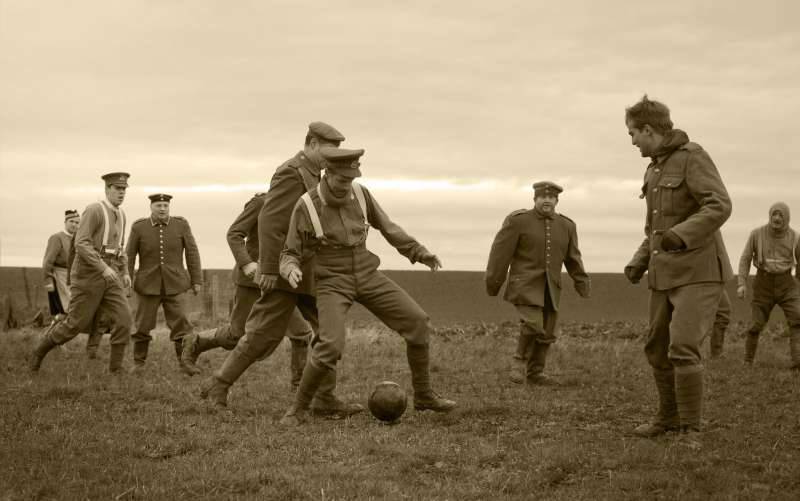
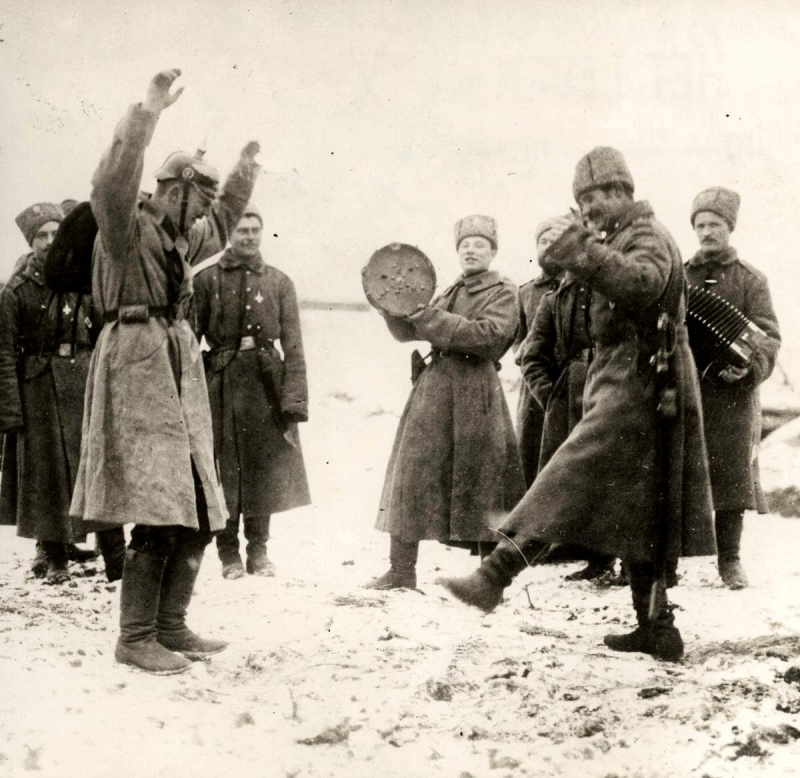
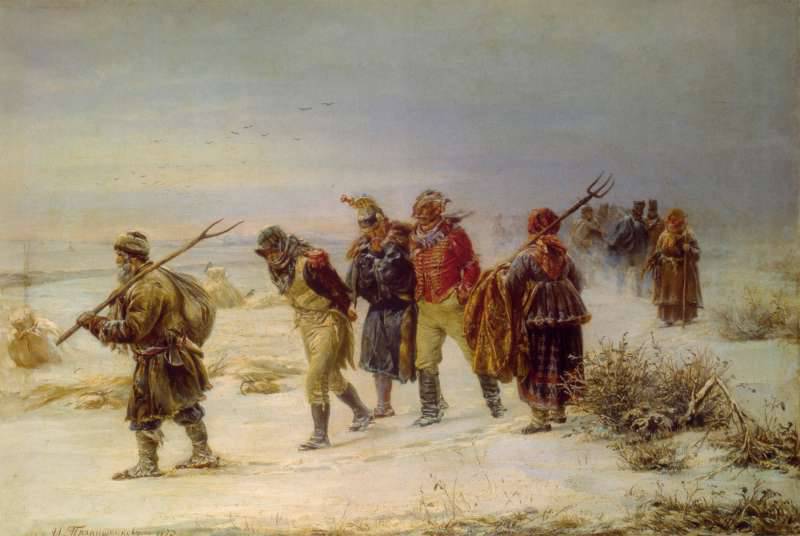
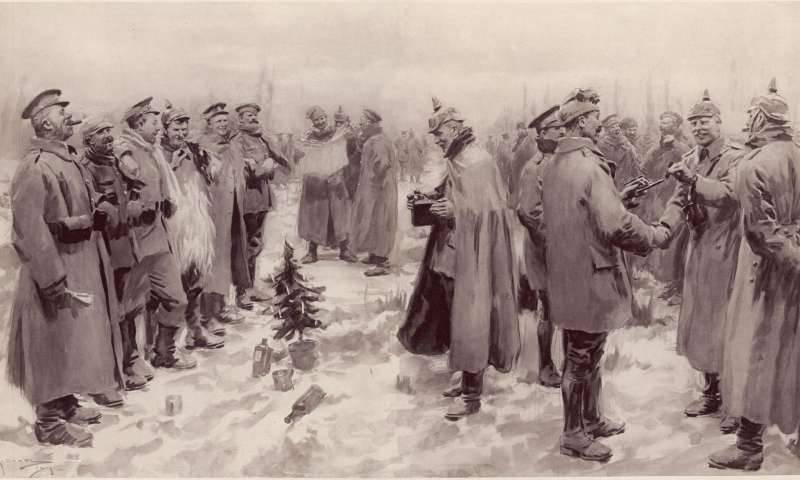
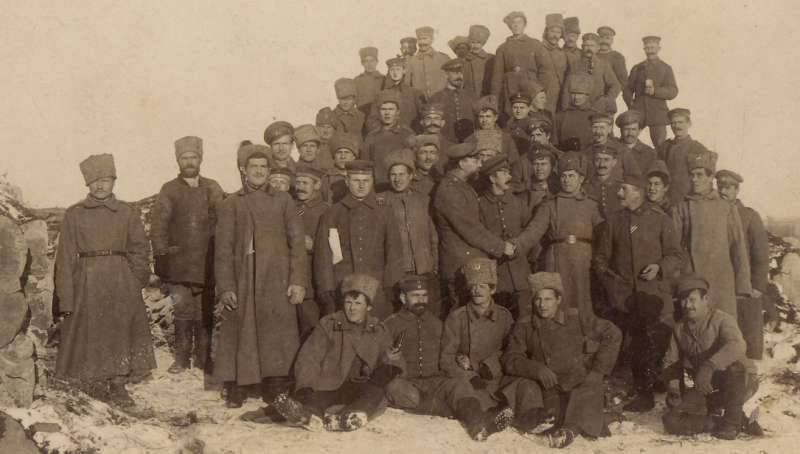
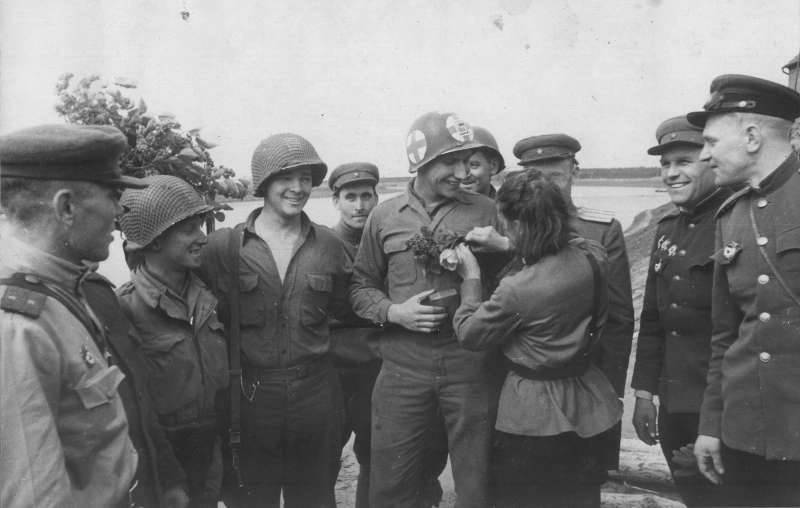
Information